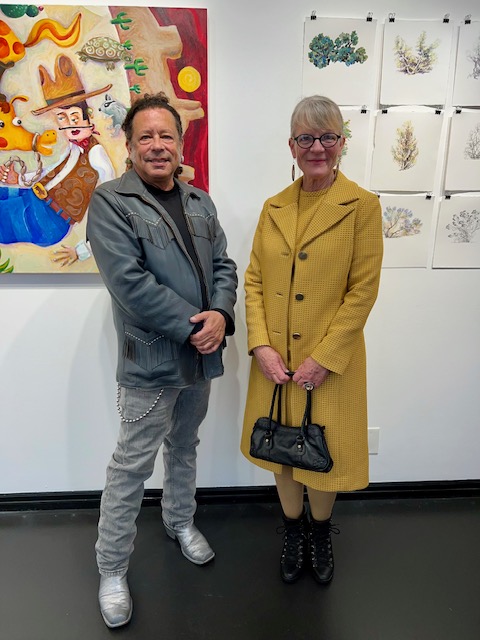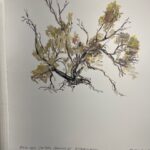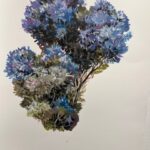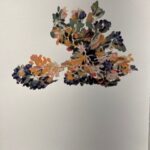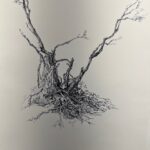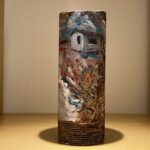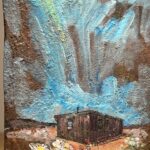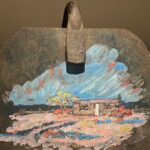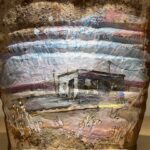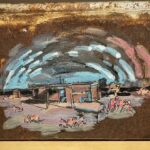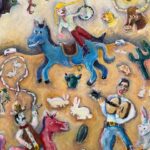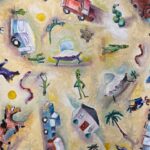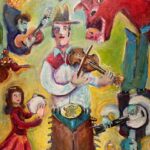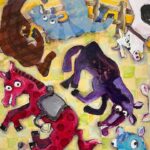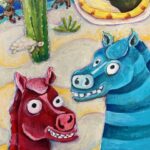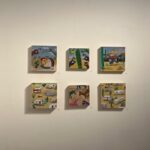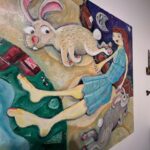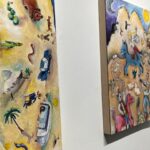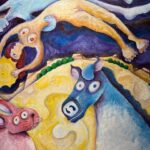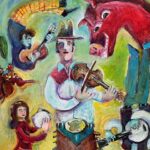Southern California in the 1950s- 1960s was ground zero for what became a revolution in ceramics, moving clay away from a strictly functional or decorative medium towards experimental, abstracted sculptural forms that pushed clay from a craft designation to a fine art one. At the helm of this mainly macho movement was the energetic, charismatic Peter Voulkos, who came to ceramics accidentally, after being required to take a ceramic course for his painting degree. Reluctant at first, he immediately fell passionately in love with the versatile, malleable material that is clay. As a popular teacher at Otis, he treated his students as colleagues, threw out any curriculum and encouraged individuality from students John Mason, Ken Price and Ron Nagle – who got rejected from the program but was hired as an assistant anyway, and created a hotbed of artistic activity.
Earth & Ember brings together iconic work by many of the luminaries who contributed to this fertile time in ceramic history and whose work is in the canon. More importantly, this exhibition is really a paean to the teaching artists of the University of California at Berkeley and UCLA, University of Southern California, Otis College of Art and Design, and Chouinard Art Institute.
The show is also tribute to the homegrown ceramics program of California State University, Los Angeles whose alumni’s works are included in the exhibition. It’s a story of affinity and inspiration, starting with Pablo Picasso, who in 1947 began working in clay and created more than 3,500 painted ceramic objects profoundly influencing Peter Voulkos himself.
Picasso’s 1948 ceramic plate “Head Of Faun” (Courtesy of Frederick R. Weisman Art Foundation), which is the centerpiece of this exhibit, is a lovely oval platter with Picasso’s hallmark jaunty and expressive line. The plate is embedded in a frame as if it were a painting, playing once more with the blurring of two and three dimensions. Nearby is one of Voulkos’s glazed porcelain plates from 1973, where he characteristically pokes holes and leaves imprints on the wet clay, clearly announcing that this is not a functional plate. John Mason, who at one time designed dinnerware but who is primarily known for his large-scale ceramic sculptures, is represented by a gorgeous series of slab plates, each with a unique geometric edge. The series of “Untitled Relief Plates, #183-186” (2008), seems to reference color field painting and shaped canvases of the 1960s-70s.
Beatrice Wood was one of the few women admitted into the all-boys club and her lusterware vessel “Dancing Ladies” (1982) is intentionally paired with Randall Bruce, who generously loaned the Wood piece from his private collection. Bruce’s “Double Bucket” from 2006 is a combination of wheel thrown and hand-built pieces, lovingly glazed with a metallic glaze. These two works are in conversation about form, function, and mystery. The pairing of Peter Shire’s meticulous whimsical, low-fire, hand- built sculptures alongside Roger Herman’s large scale, wobbly, abstract-expressionist vessels and table, are brilliant. Where Shire uses an underglaze pencil to carefully draw on the flat slab teapot piece entitled “Fallen Idol” (2005), Herman pours and brushes glazes on his vessels “Frog” (2023) and “Untitled” (2020), allowing the glazes to coagulate, run and even flake off. Shire is a multidisciplinary artist whose ceramics and furniture all incorporate the bright colors, jazzy patterns, and geometric shapes of the Italian design group Memphis. Herman, most well known as a neo-expressionist painter before turning to ceramics uses this technique to charming effect.
Thomas Muller’s “a smoke-filled room” from 2017 is a witty conceptual text- based piece, cracked and peeling, and alluding to power brokers who meet in back rooms. The phrase originated in 1920 to describe the process in the Republican National convention nominating Warren G. Harding for president. And of course, clay is also fired – though hopefully not in a smoke -filled room, though the process of Raku firing relies on smoke to create beautiful and accidental surface effects.
The variety and complexity of the techniques exhibited here is staggering, from wheel thrown to slab construction, slip cast assemblages and a combination of wheel thrown and hand-built: the clay and glazes range from secret formulas to commercial ready-made glazes to automotive paint and the clay bodies from low fire to high fire to locally harvested clay. There are too many outstanding pieces, too many compelling ideas explored here to discuss them all.
It’s a great chance to see a wide variety of approaches and works from the intimate to the grand in scale. This is a mini survey show and like a delightful appetizer leaves the viewer wanting more.
Earth and Ember: Ceramic Exhibition
January 22- February 22, 2024
Ronald H. Silverman Fine Arts Gallery
Cal State LA
- Nancy Kay Turner; photos: Nancy Kay Turner and as provided by the gallery






























